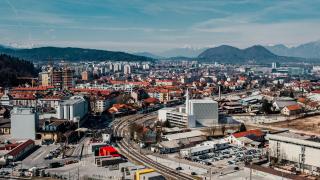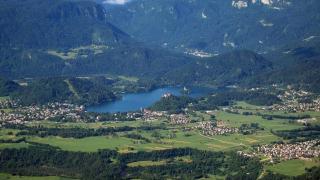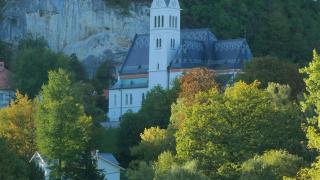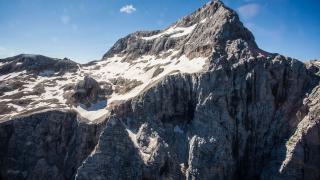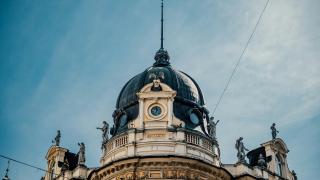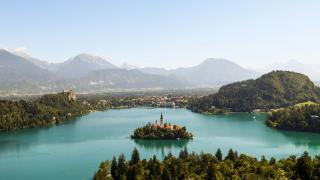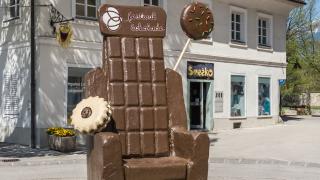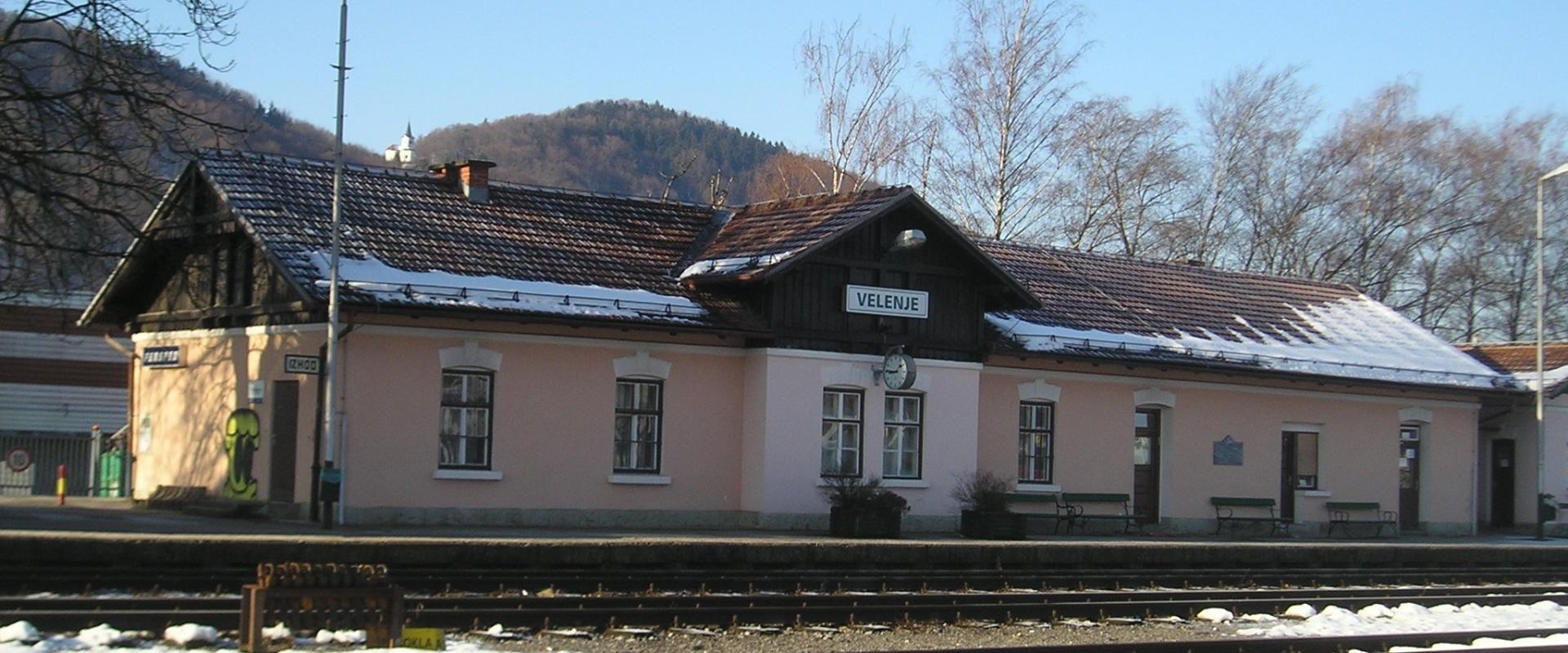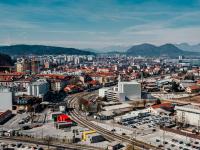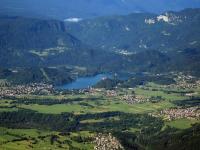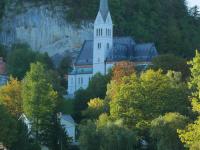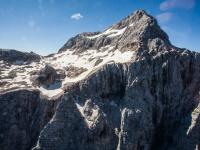Public transport in Slovenia relies mainly on buses and trains.
- Buses connect most cities, towns, and many rural villages. Arriva is the largest bus operator.
- Train routes link major cities like Ljubljana, Maribor, Celje, and Koper. Scenic lines include Ljubljana–Lake Bled and Ljubljana–Koper.
- Ljubljana is the central hub. Main bus and train stations are adjacent, making transfers easy.
- Urban buses in Ljubljana use the Urbana card. Single rides cost €1.30, valid for 90 minutes with transfers.
- Intercity bus tickets start at €3–€10, depending on distance. Train fares from Ljubljana to Maribor are around €9.
- Timetables are available online at Arriva.si and Slovenske železnice (Slovenian Railways).
- Services are frequent on weekdays, less so on weekends and holidays. Rural connections may run only a few times daily.
- Tickets can be bought from drivers, stations, or online. Round-trip discounts are common.
- Public transport is reliable for reaching cities, towns, and popular sites, but coverage is limited in remote areas.
- Compared to Western Europe, Slovenia’s network is smaller but efficient for its size.
Bus Networks: Connecting Every Corner
Buses are the backbone of public transport in Slovenia.
- Arriva and Nomago are the main bus operators. Arriva covers most regions, including Gorenjska, Štajerska, and Primorska. Nomago operates intercity and regional routes, especially in eastern and southern Slovenia.
- Ljubljana’s main bus station (Avtobusna postaja Ljubljana) is the central hub. Buses depart frequently to Maribor, Celje, Kranj, and other cities.
- Regional buses reach smaller towns and many villages. Some rural lines run only a few times per day.
- Timetables are available on operator websites (arriva.si, nomago.si) and at bus stations. Schedules change on weekends and holidays; check in advance.
- Urban buses in Ljubljana (LPP) run every 5-20 minutes. Intercity buses may run hourly or less, especially off-peak.
- Tickets are bought from drivers or kiosks. Prices start at €1.30 for urban rides; intercity fares depend on distance (e.g., Ljubljana–Bled: €7, Ljubljana–Piran: €12).
- For Lake Bled, direct buses from Ljubljana take 1 hour 20 minutes. Postojna Cave is 1 hour by bus from Ljubljana. Buses to Piran run several times daily, taking about 3 hours.
- Arrive at stops 10 minutes early. Some rural stops are request-only.
- Buses are reliable but less frequent on Sundays and holidays.
Rail Journeys: Scenic Routes and City Links
Slovenske železnice (SŽ) is Slovenia’s national rail operator. The network connects major cities and some tourist destinations.
- Key routes:
- Ljubljana–Lake Bled (Lesce-Bled): 1 hour, scenic mountain views. Trains run 8–10 times daily. Ticket: €6–€7.
- Ljubljana–Koper: 2.5 hours, passes through Karst and coastal landscapes. Up to 5 trains daily. Ticket: €11–€13.
- Ljubljana–Maribor: 2 hours, crosses the Drava Valley. 10–12 trains daily. Ticket: €9–€11.
- Trains include regional (potniški), intercity (IC), and EuroCity (EC) types. Regional trains stop more often. IC and EC are faster and more comfortable.
- Onboard: basic seating, luggage racks, restrooms. No restaurant cars on most routes. Some trains have bike spaces.
- Scenic highlights: The Bohinj line (Jesenice–Nova Gorica) offers mountain tunnels and viaducts. The Sežana–Koper route reveals Adriatic views.
- Limitations: Rail does not reach many rural areas. Buses may be faster for small towns.
- Trains are preferable for direct city-to-city travel and for scenic journeys.
- Tickets are available at stations, online, or via SŽ mobile app.
Tickets, Passes, and Practicalities
Bus tickets in Slovenia can be purchased directly from the driver, at bus stations, or via Arriva’s website. Payment is accepted in cash or by card at stations; drivers often require cash. Train tickets are available at Slovenske železnice (SŽ) stations, ticket machines, or online at potniski.sz.si. Onboard purchase is possible if no station is present, but a small surcharge applies.
- Urban buses in Ljubljana use the Urbana card. Buy and top up at kiosks, LPP offices, or some post offices. Single rides cost €1.30 and are valid for 90 minutes with unlimited transfers.
- Intercity bus fares vary by distance. For example, Ljubljana to Bled costs about €7 one way. Return tickets offer a small discount, usually 10% off the second leg.
- Train fares are distance-based. Ljubljana to Maribor costs about €11.50 one way. Round-trip tickets save around 20% compared to two singles.
- Discounts apply for students (with valid ID), seniors (over 65), and children. Youth under 26 can get a SŽ Youth Card for reduced fares.
- Eurail and Interrail passes are valid on Slovenian trains but not on buses.
- Always validate tickets before boarding trains. On buses, show your ticket or Urbana card to the driver. Fines for unvalidated or missing tickets start at €40.
- Book popular routes in advance, especially in summer. Check schedules online, as weekend and holiday services may be limited.
Smart Strategies for Travelers
Arrive early at bus and train stations. In Slovenia, buses may leave promptly, especially from Ljubljana Avtobusna postaja. Local etiquette: Greet the driver with "Dober dan." Queue politely. Validate your Urbana card on Ljubljana city buses. Rural bus and train services are limited, especially on weekends. Some villages have only two buses per day. Check schedules on Arriva.si for buses and Slovenske železnice (SŽ) for trains. Real-time updates are available on the Nomago and SŽ apps. Tickets: Buy bus tickets from drivers (cash preferred outside major cities) or at stations. Train tickets are available online or at stations. Alternatives: In remote areas, consider car rental (from €30/day) or call a local taxi. Rideshare apps like Bolt operate in Ljubljana. Quick checklist:
- Arrive 10 minutes early
- Check schedules online
- Carry cash for rural routes
- Download Arriva, Nomago, and SŽ apps
- Know your stop names in Slovene
- Have a backup plan for rural travel
